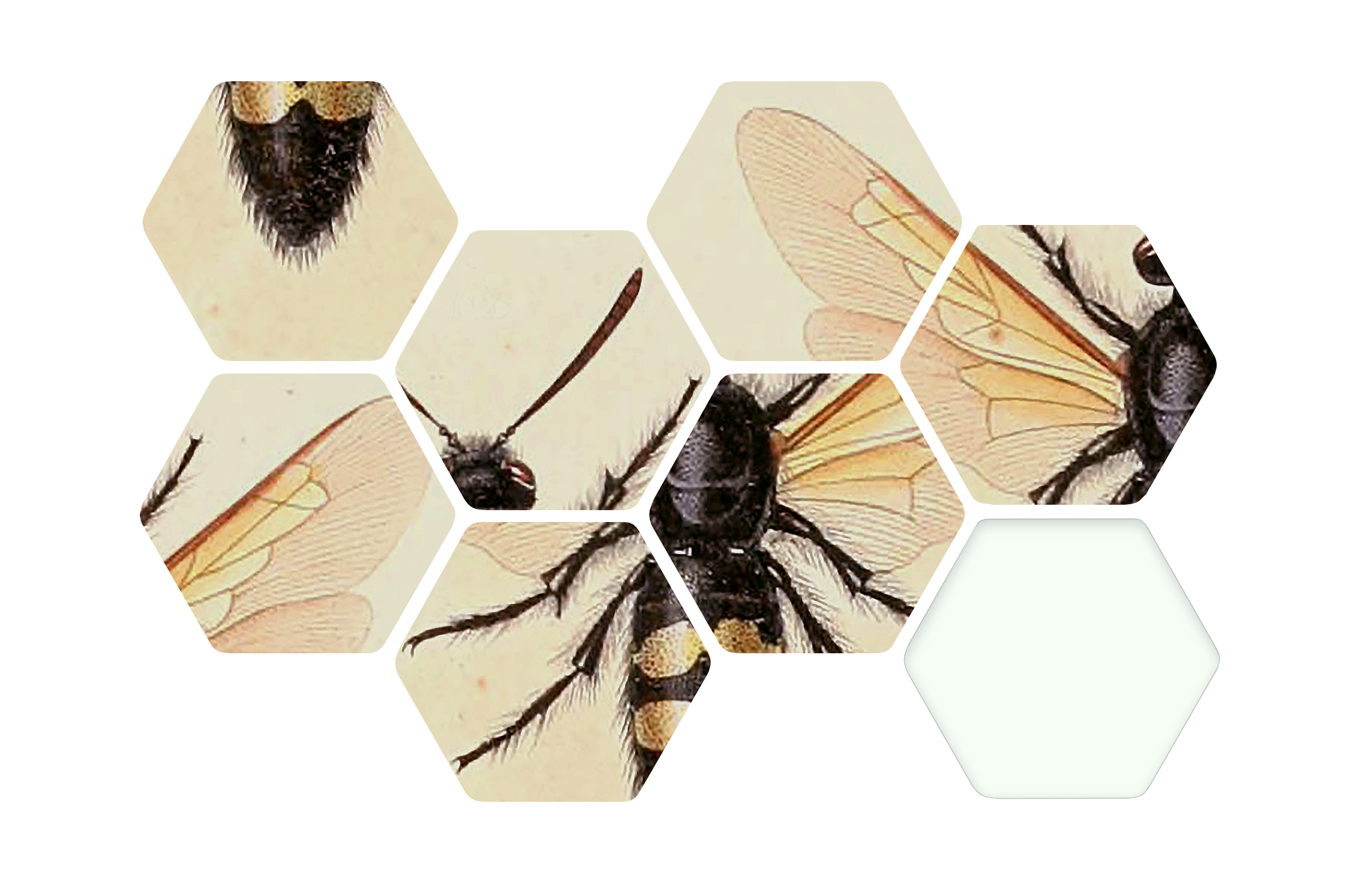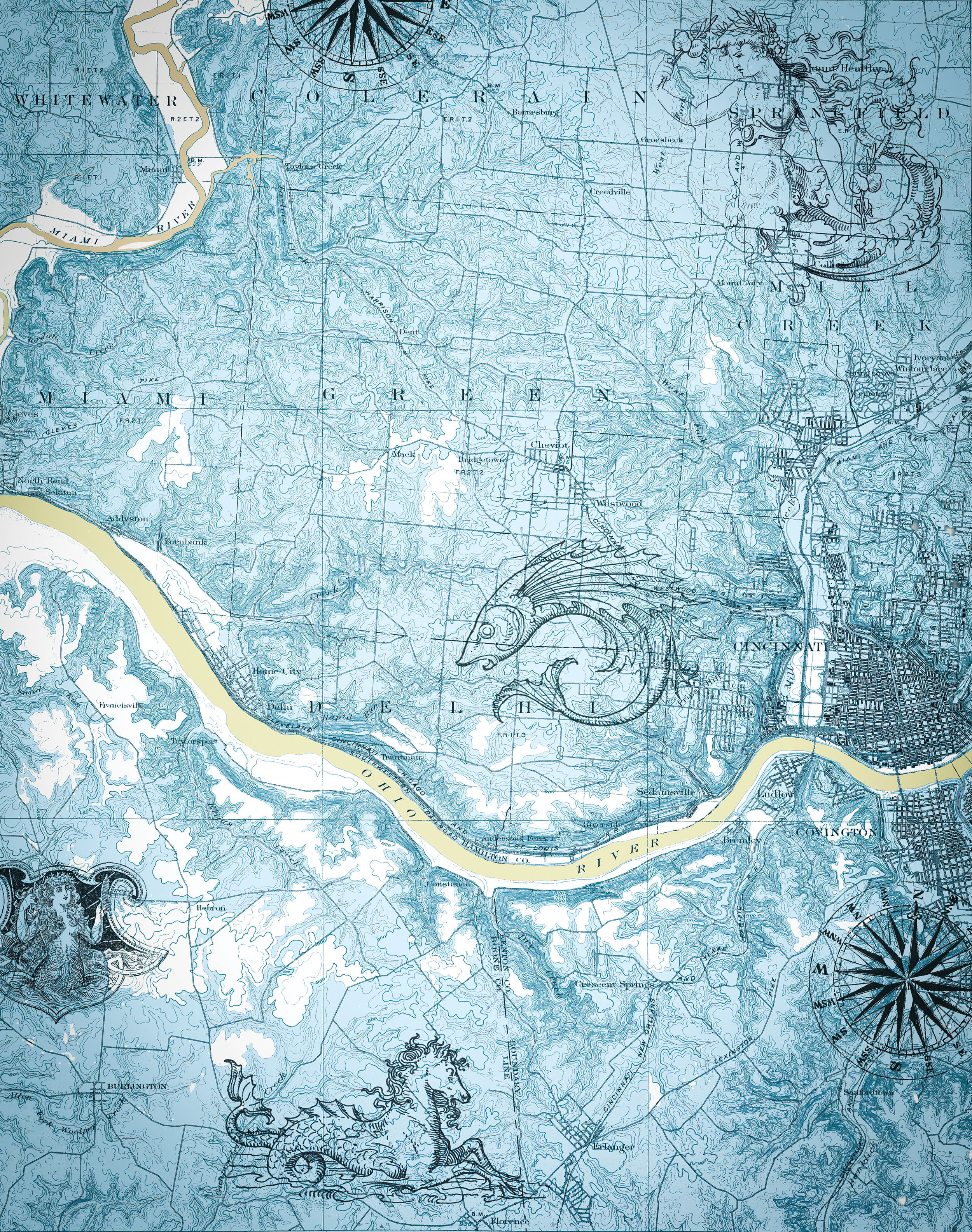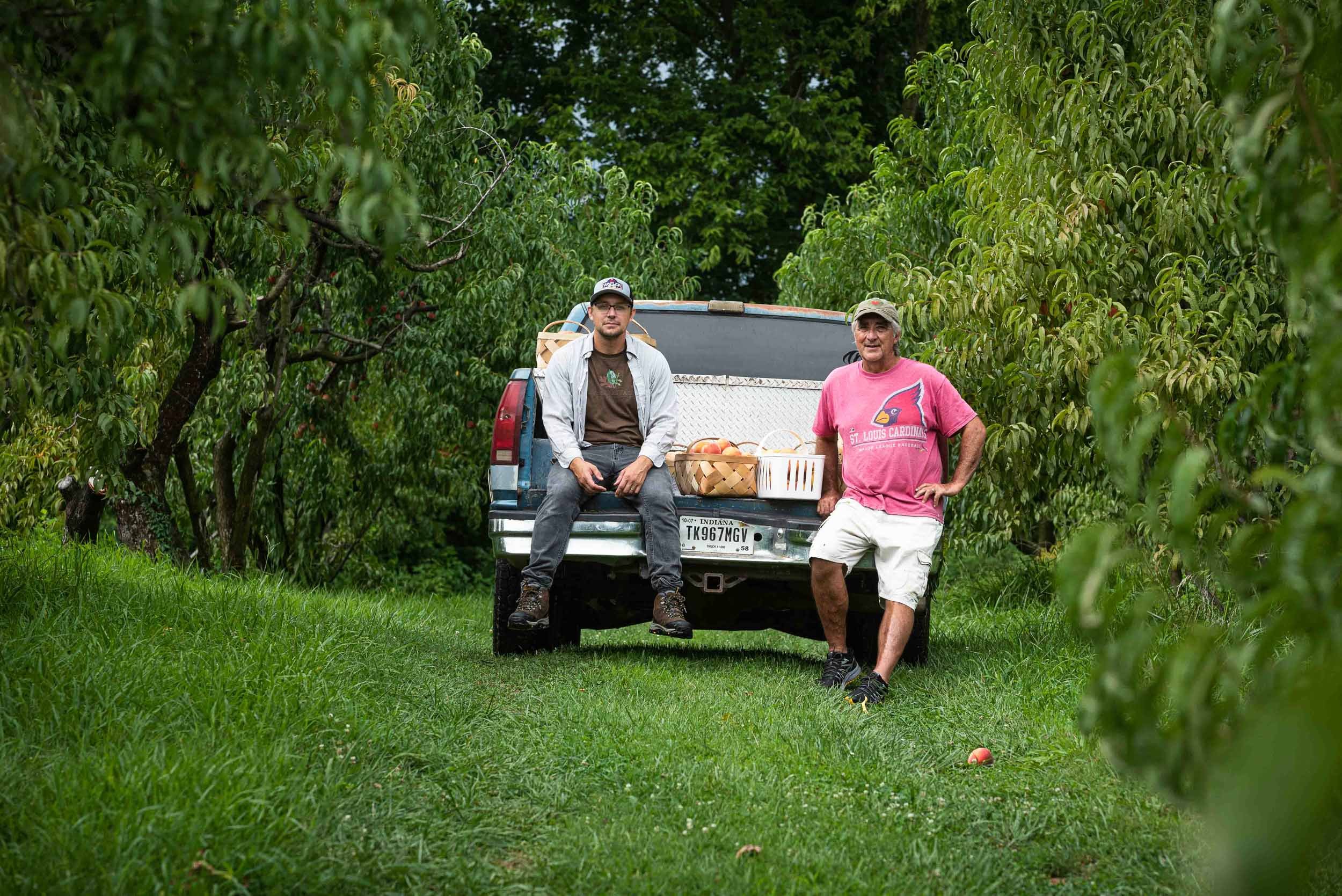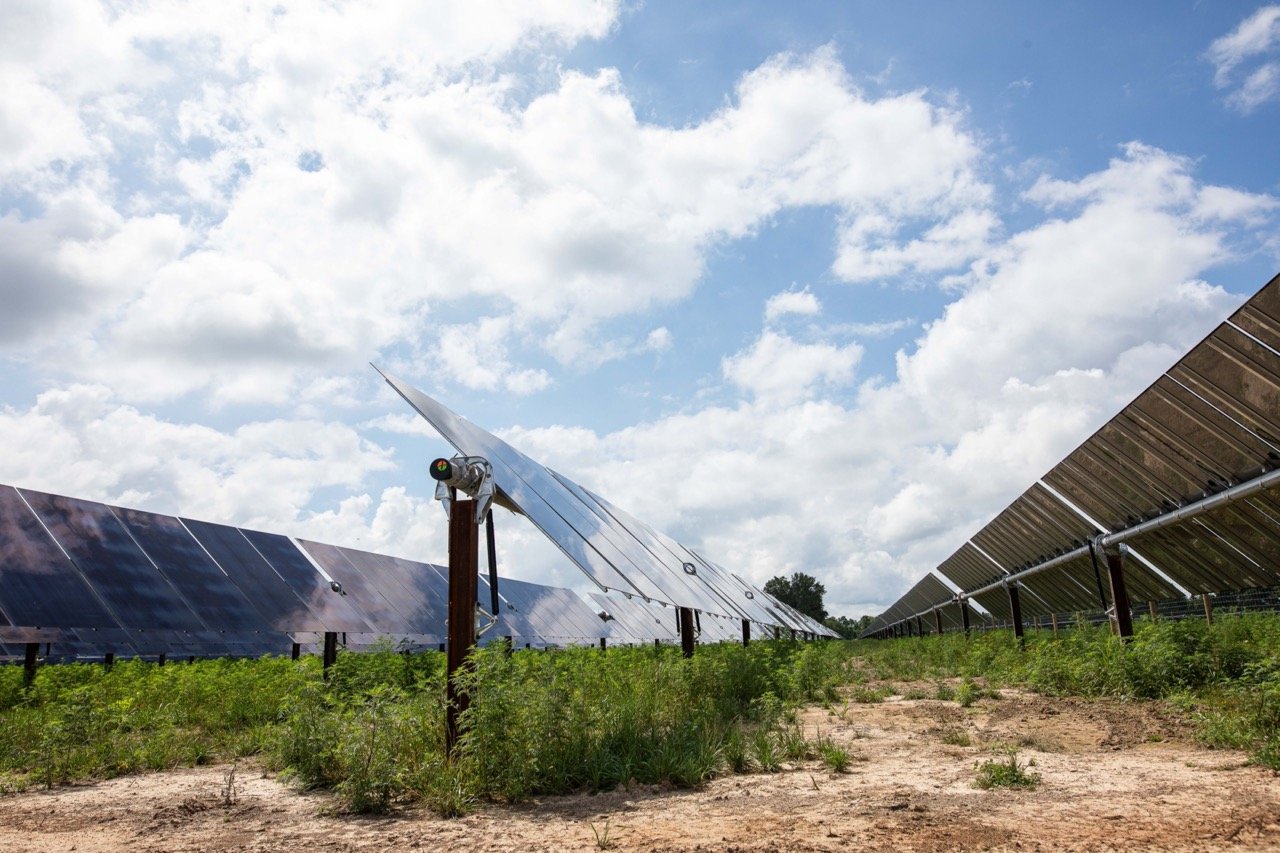How Are the Bees?

Illustrations by John Morris
About 10 years after an unknown disorder began destroying essential bee colonies, we’re not out of the woods yet. Here’s why that’s a big deal.
If you’re in your garden in June, the world is pretty nice. Hopefully, April and May were kind and your soon-to-be-delicious plants are hitting their stride. That summer sun is making the tomato plants tall and bushy. You’ve got your eye on a few ping pong-ball sized green ones, already thinking ahead to July. Peppers: check, doing well, which means salsa is only a few weeks away. Zucchini: ahhh, fresh basil comes to mind. Melons, like the zucchini, are ready to bust out, take over the garden.
Then you notice the bees, moving faster now as the sun gets higher. You watch them buzz out of one flower, heavy with nectar and pollen, landing silently on the next. How do they do that? “Keep at it bees,” you whisper. “Tell your bee friends there’ll be more flowers tomorrow! Come back, it’s June!”
Your thoughts shift: Wait, are the bees OK? Your mind turns back a couple of years: Didn’t something happen to the bees? Is that over with? What’s going on?
Important questions. Indeed, a lot of people are urgently trying to find out what’s going on with bees and how they are faring, whether they are thriving or in trouble, impaired from some unidentified peril. It’s scary to think of bees in an irreversible decline. Most of our country’s food crops depend on bee pollination. Surely, they can do something about this, just like protecting wild horses and eagles and wolves.
Bees do have a lot of friends, and that’s good, but the hard work is just starting. Are bee populations and species in decline or not? There are 4,000 bee species in the U.S., 20,000 worldwide. You can count wild horses from an airplane. Not so easy with bees.
Illustration by John Morris
Honey Bee Health
Problems with bees burst into the news about 10 years ago, when beekeepers began reporting a devastating series of events that eventually came to be known as “colony collapse disorder” (CCD). There are always risks and unpleasant surprises with animal husbandry; bees, like other animals, are susceptible to diseases, pests, pathogens, and bad luck.
CCD was different. Bees just disappeared from their hives, gone without a trace. CCD implied extreme, irrational behavior, because bees don’t leave food (honey) and they don’t leave their queen. During the winter of 2006–2007, according to the Environmental Protection Agency, some beekeepers reported losing 30% to 90% of their hives; many hives didn’t show any known causes of honey bee death. There were no dead bees left behind, so no chance to seek clues.
CCD shook the agricultural and scientific communities. In the U.S., wild and managed bees add $15 billion to crop values each year. Federal, state, and research experts rushed to find answers. In 2007, the U.S. Department of Agriculture established a “Colony Collapse Disorder Action Plan.” In 2013, the USDA convened a national stakeholder conference on honeybee health. In 2014, President Obama established a task force to create a “Strategy to Promote the Health of Honey Bees and Other Pollinators.”
Fortunately, in the last few years, CCD has lessened, although that just seems to be through luck, not necessarily the direct result of human attention. According to the EPA, the number of hives lost during winter in the last 10 years averaged about 28.7%. For 2014–2015 the number dropped to 23.1%. CCD may have caused about 60% of hives lost in 2008, but just 31.1% in 2013. In initial reports for 2014–2015, CCD is not mentioned.
Unfortunately, the hives-lost count see-saws. Winter losses were down in 2014–2015 but summertime losses exceeded winter losses for the first time. According to a preliminary USDA survey, annual losses for 2014–2015 were 42.1%.
There are many theories about colony collapse. Perhaps mites and viruses and other pathogens are the root cause. Maybe pesticides. Loss of habitat. Possibly, poor management by beekeepers. But these are not new stressors for bees; mites, for example, have always been a problem.
Some experts surmise that colony collapse was almost an inevitable outcome, the result of multiple, cumulative stressors, and that CCD resulted from some still unknown “final straw,” tripping a fatal, overwhelming switch.
Tiny, Complex Marvels
Michael Niemeyer is a beekeeper and apple grower based in Bright, IN, just north of Lawrenceburg. Niemeyer sells a variety of apples at Findlay Market. He’s grown apples for 25 years. He’s raised bees for 50. He cares for hives at other orchards. Some of his hives have succumbed to CCD, which he describes as a phenomenon out of science fiction.
During a visit on a relatively warm day in March, Niemeyer checked on two hives. He was pessimistic about one: It was too quiet. The second seemed OK. Pressing his ear to the wooden side of the hive he could hear a slight buzzing inside. As he tapped lightly, the sound increased. Good.
Niemeyer explained that in winter, bees form a “cluster” around the queen to keep her warm, a huddle requiring intense energy on frigid nights. Unbelievably, clustering keeps the hive at 50°. Even more unbelievably, the temperature at the center, for the queen, is 90°.
Bees are amazing, but they are also mechanical, and if autonomous tasks are interrupted, or can’t occur, there’s no Plan B. Everything a bee needs to know it knows from birth, Niemeyer explains; they don’t learn new behaviors over their lifetime.
Again, consider clustering: The bees at the exterior are much colder, at higher risk, than bees close to the center. Therefore, the bees take turns moving to different places within the cluster so that each bee benefits from the heat. If that mobility doesn’t happen in an exact way, the queen is in danger. When hungry, the bees do not break formation; the entire cluster moves along the stored honey.
Bees survive because of precise and precisely sequential activities. There’s little room for error, because there’s just one way to get things done—the bee way. With bees and hives, everything is linked, and just one monkey-wrench in this extremely intricate world can cascade into
systemic failure—collapse. It’s possible that new, multiple weaknesses have developed within this overwhelmingly complex chain of events. Or, it’s possible that new pathogens and chemicals, because of quantity and quality, have disrupted the bees’ world.
There’s a bigger, scarier picture. Discussions about colony collapse focus just on honey bees, that is, domestic bees. More worrisome is whether honey bees are a proxy for native, wild bees, which pollinate the rest of the immeasurable earthscape beyond farms and farming. (Bees are not the only pollinators. Butterflies, bats, hummingbirds, and even flies are other important pollinators.)
Experts say that if CCD is caused by loss of habitat, mites, viruses, overuse of pesticides, and poor nutrition, then yes, native bees, too, are likely challenged. Where “fixes” are concerned, however, at least honey bees live in an approachable and defined domain. Not the case with native bees. Research is much more difficult. Honey bees may respond to better management. Native bee problems are linked to much more contentious issues of conservation—sprawling cities, wider roads and highways, parking lots, pesticides, habitat destruction.
What’s Being Done?
In June, 2017, the USDA convened a national conference on bees, a “listening session” to discuss strategies for monitoring native bees. Participants included experts from academia, industry, and regulatory groups. One impetus for the conference was to follow up on a 2016 Government Accounting Office report recommending development of a “mechanism to coordinate the monitoring of wild, native bees.”
Unfortunately, eight months (as of this writing) after the listening session, nothing has happened. Rosalind James, a USDA research program leader, says that a plan is “still under development.” James adds that instead of one national plan there may emerge individual and regional projects. “The plan is not on hold or cancelled,” James says, “now the scientists need to get together and work out the next steps so we can pool existing and future efforts.” But the timetable for next steps is unclear.
Quinn McFrederick, Ph.D., an assistant professor of entomology at the University of California-Riverside, participated in the USDA’s listening session. McFrederick asserts that a national monitoring plan for native bees is essential. He seeks a plan that standardizes research work, yet provides regional insights important for wild, natural settings, such as California, as well as for large-scale agriculture, such as in the Midwest. He said a national plan has to go beyond just “stringing together ongoing programs,” a reference to the fact that there are monitoring programs in various states and within various universities. But these efforts are not overseen centrally and deliberately coordinated to maximize research results.
“We can’t just have a burst of programs,” McFrederick says. There needs to be sustained commitment, including funding, to develop an accurate portrayal of wild bees and pollinators. He thinks there’s a good chance this research will start, hopefully soon. After all, he notes, “the bottom line is that this is about food.”
Kathryn LeCroy, a Ph.D. graduate student at the University of Virginia, also participated in the USDA’s listening session. She, too, emphasizes the need for a well-defined, long-term national plan. She has experience with state projects. Native bee monitoring efforts in Maryland, for example, “really opened our eyes to native bee species loss,” she said, causing entomologists to ask the broader question: “Is this the same everywhere?” LeCroy suggests that “if we had a good national plan, that would be one way to scale up good statewide projects,” to build on work and answers that may be close to implementation, but unknown in locales where conservation work is needed.
Not surprisingly, considering the agricultural links, individual states oversee and monitor bees and pollination. Ohio, Kentucky, and Indiana have state apiarist offices within their departments of agriculture.
Barbara Bloetscher is Ohio’s State apiarist/entomologist. When asked about Ohio’s response and actions regarding colony collapse, she says that CCD in Ohio has declined. The challenge now, she says, “is we need to figure out what to do to avoid it happening again.”
Bloetscher said Ohio has a strong apiary inspection program, largely based in Ohio’s counties, although Hamilton County is one of 13 counties without an apiarist. Officials inspect hives, track diseases, and provide advice. Bloetscher said she relies on reports from beekeepers themselves regarding any issues or problems in Hamilton County.
Bloetscher advises Ohio’s beekeepers to buy Ohio bees. “Those bees winter here,” she explained. “They are stronger because they have survived here. They have tolerance to cold weather and to Ohio’s climate.” Bloetscher says Ohio has a strong queen inspection program. Nutrition—meaning open space with ample food sources—is critical. “The main thing that I’m trying to teach beekeepers,” she says, “is to put their bees where there is lots of forage. Bees need 1 to 3 acres of flowers to get enough nutrition. The problem we have with urban beekeeping is if there is nothing around but concrete and buildings, they don’t get the nutrition they need. It’s more than temperature or anything else—bees need a lot of nutrition.”
Bloetscher was asked whether there are specific issues for bees in different parts of the state; whether bees in Southwest Ohio, for example, face different challenges than in, say, northeast Ashtabula County, along Lake Erie. The big difference is temperature, she says; it gets warmer here in the Ohio Valley sooner. Recall clustering, and the hive’s struggle to maintain heat to keep the queen alive.
Ohio has been involved with federal honey bee surveys since 2013. Bloetcher’s team collects bees from 24 different apiaries. The bees are tested for viruses, diseases, and pests, and the information is forwarded to the USDA. These efforts are critical for honey bees.
Can something similar start for native bees? It’s probably not too late.
Illustration by John Morris
Tom is a freelance writer specializing in environmental, energy, and transportation issues. He lives in Cincinnati’s Westwood neighborhood. He likes to garden, but, alas, the deer have robbed him of yet another earthly pleasure.







